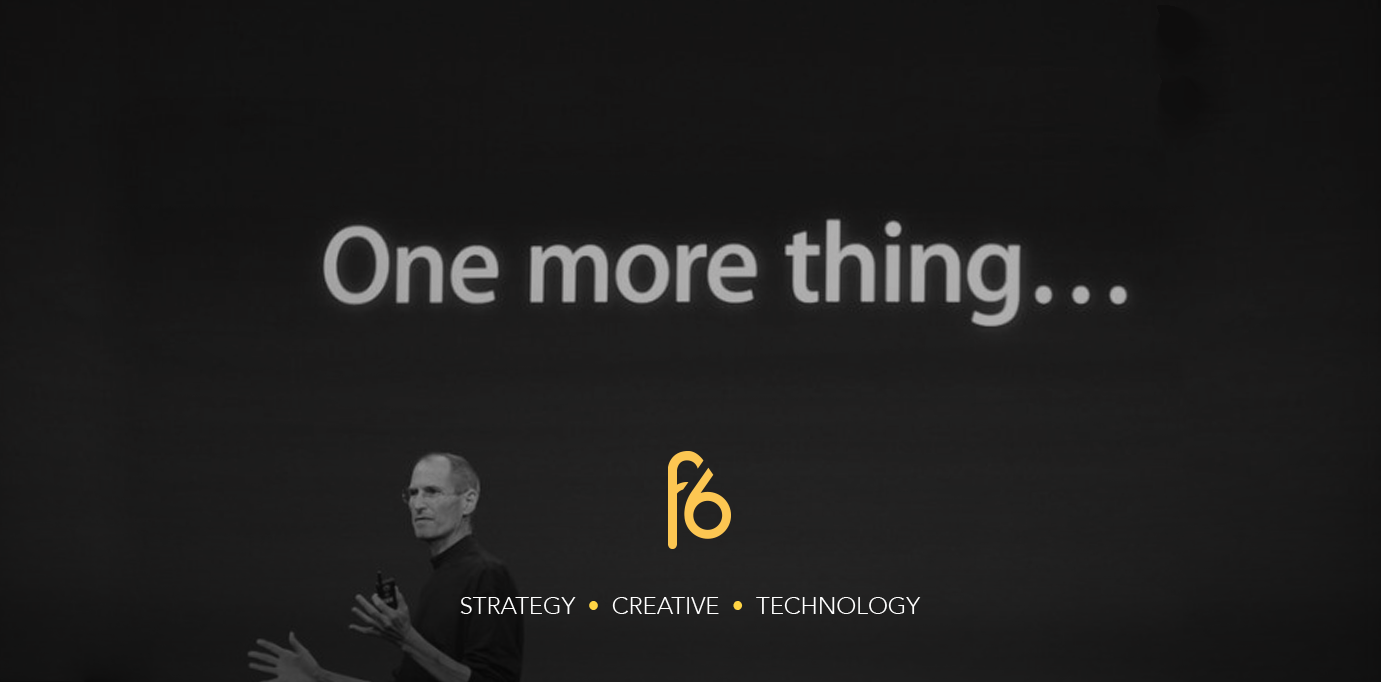In the age of fake news and WikiLeaks, it’s clear that it’s never been easier to broadcast a message publicly. However, in an increasingly fast paced, information-saturated environment, commanding and maintaining attention is challenging. And unfortunately, this is bad news for anyone planning to launch a product.
The success of a product launch heavily depends on your ability to capture people’s attention over a long enough period of time to convince them to get to the point of purchase. Our methods now have to accommodate how we consume new media and how we decide to make purchases. From once depending on the few who had the monopoly on information to report your launch, sitting back, and watching the purchases role in, we’re now contending with a prolonged process of sending out action-inciting content that guides consumers through to the final transaction and beyond.
Crafting journeys from the outside in
The reason why Apple was, and still is king of the product launch is not only down to their industry clout and revolutionary products (although this helps), it’s because they carefully craft their launches in a holistic manner, from the outside in.
And this is what any good strategy for a product launch does—it starts with the consumer first, looking at every possible touchpoint they might come into contact with before, during, and after the launch event, and then exploits these to not only help shape a full brand experience, but to funnel you to straight to the purchase point. Apple’s product launches are in effect one joined up journey that offers an end goal with a great brand experience along the way.
The easiest way to think about Apple’s overall strategy for their launch event is a series of launch strategies within each phase of the journey. Within these strategies there is a main touchpoint alongside actions from Apple that encourage and facilitate consumer actions.
Takeaway: Work from the outside in to put the customer first in your product launch. Do this by identifying touchpoints in the pre, during, and after phases that will smoothly guide your customers to make a purchase and beyond
Mapping touchpoints and actions for purpose
Pre Event: Teaser and lockdown
Any product launch that’s going to generate enough interest starts 6-8 weeks before the actual launch event date. At this point Apple will usually send out some PR that they have an announcement and will invite major industry influencers to a keynote.
This is effectively the lock down phase of the launch. Nobody within Apple is allowed to say anything regarding what the keyonte might be about, and instead they sit back and watch everyone else do the talking, effectively utilizing social media as the first consumer touchpoint and counting on the quick saturation of information. Press articles, social media shares, even mock ups of what the product might look like come for free. Keynote invitations to the event are decoded in minute detail in the hopes of uncovering what’s going on and breaking the mystery early.
Only when word of mouth starts to die down, will Apple kick in the next phase of the pre event strategy—a teaser campaign. Traditional advertising media becomes the next touchpoint, creating awareness and intrigue. This helps to remind people that something is still going to happen and funnels them towards the website.
And this is where things get interesting for Apple. They do the unthinkable and shut down their online store. They effectively convert the purpose of this particular touchpoint to a landing page that encourages you to add the event to your calendar. This not only ensures you’ll get an extra digital nudge to attend the live stream of the keynote, but helps to build even more media and consumer attention—because who shuts down their online store?
Takeaway: Apple’s pre launch strategy is all about building suspense through exploiting touchpoints to get people talking. Most of all remember they think outside in—identify where your customers are and who is most valuable to get talking about your product, then guide them through your touchpoints with actionable content. Start early and you’ll benefit from more time to build suspense and attention.
During Event: Keynote and Fanfare
You can’t say live keynote without thinking iPhone, Steve Jobs, and turtlenecks—And it’s not just because of their charismatic speakers and questionable fashion choices. It’s because they follow one golden rule for a successful product keynote—they talk about the product in terms of the user first.
Whenever Apple talks about a product they won’t talk about hardware specifications. It’s very easy, especially for tech companies, to get excited about tech specs, but it’s an inside out approach that relies on customers understanding or even caring about the difference between an intel core processor i7 and an Xeon. Think from the outside in, and ask yourself what does my product do for the user and how does it make their life better. Does your device let me do all the things I need to do and more at lightning speed? Great—whether it has an intel core processor i7 or an Xeon is a secondary piece of information.
The focus here is therefore on presenting relevant and compelling content. It needs to make your potential customers believe this product is for them in order to drive them instore or online.
Takeaway: Your product has to be real news. Position it as redefining the category and explain the impact it will have on customers, because the content you’re showing people and talking about at your launch event has to be compelling enough to drive consumers to next touchpoint.
After Event: Stampede and Attention to Service
The final phase of Apple’s launch strategy focuses on what happens after the launch event itself. Here, it’s all about closing the deal whilst elevating the perception of the brand. They do this using two methods.
The first is the creation of artificial scarcity. This works on the idea that the harder a product is to get, the more desirable it becomes. Luxury fashion brands often do this, as do big companies like Nintendo, by restricting opening hours, limiting stock levels, and releasing special editions. Apple often prefers to drive demand by taking pre-orders only and limiting their stock levels—which often results in the news reporting on all the people camping outside the store wanting to make sure they get their hands on the new product.
The second method involves paying attention to the quality of service and brand experience once a customer has completed the transaction. After visiting the store or the website, the next touchpoints are the product itself and any customer support that might be needed.
Here, it’s not only wise to make sure your product actually works as intended, but consider what it comes packaged in. Apple famously took inspiration from Japanese Packaging and Italian car design to give a luxury feel to their product. Opening the box is designed to be an experience in itself, and the amount of people who hang onto the packaging is testament to how well it works.
Customer support is also designed from the outside in to offer the best possible experience, with Genius Bars that will get you up and running the moment you make the purchase.
By focusing on packaging design and customer service online and instore, the experience of the product and brand are curated to elevate and reinforce the quality of the brand, in turn building a large and faithful fanbase.
Takeaway: It’s as important to guide your customers in their journey after they make the purchase, as it is guiding them into making the purchase. An after event strategy will help you shape your brand experience and create a faithful fanbase—get it right and it’s likely they’ll be fans for life.





